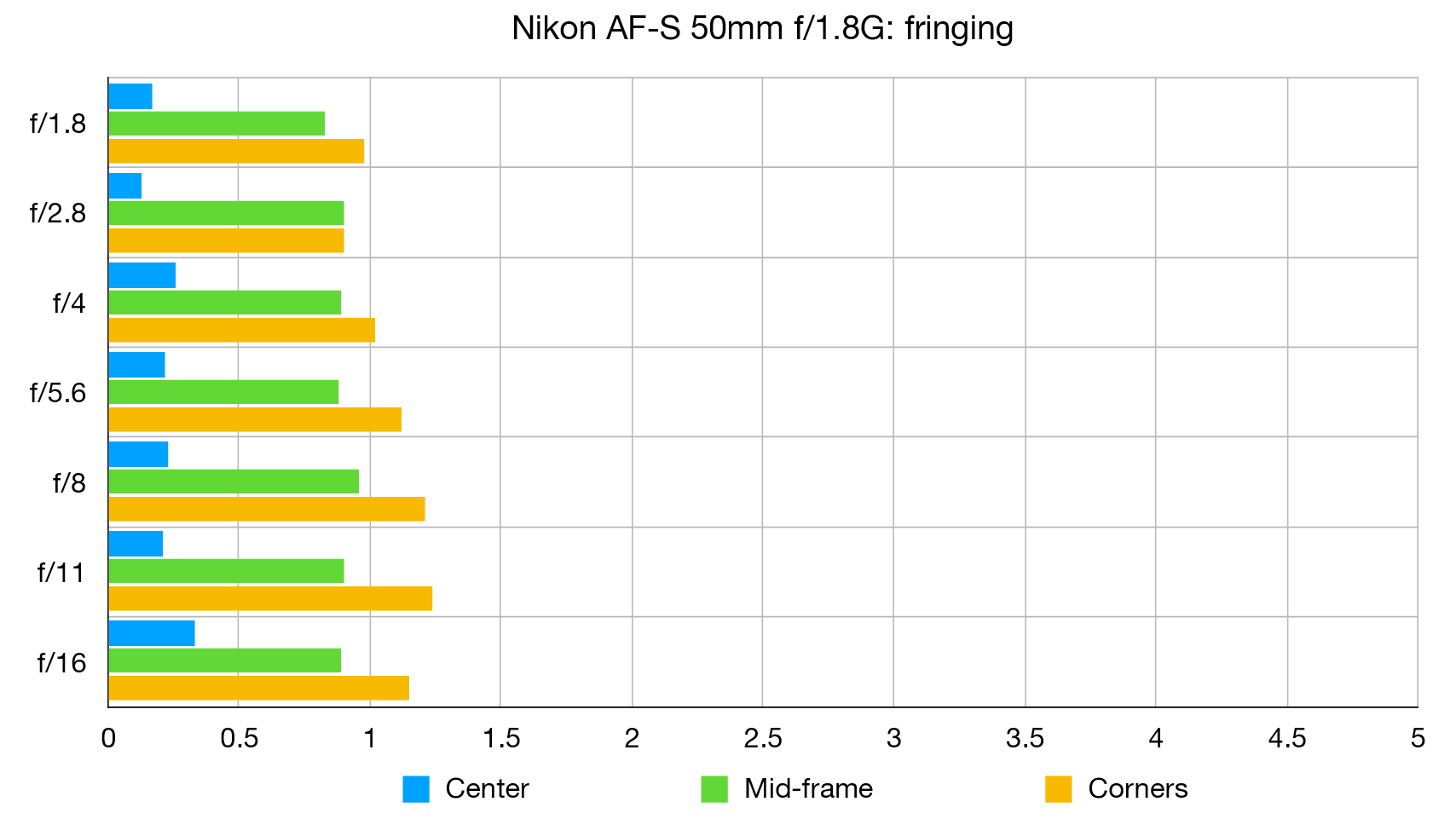Digital Camera World Verdict
Fairly small, lightweight and inexpensive, this Nikon lens combines a classic 50mm focal length with a fast f/1.8 aperture. It gives a standard viewing angle on Nikon FX (full-frame) cameras and works equally well as a short telephoto on DX (APS-C) format bodies, where it’s ideal for portraiture and still life photography. Despite the budget price tag, it features a ring-type ultrasonic autofocus system and delivers good image quality and all-round performance.
Pros
- +
Ring-type ultrasonic AF
- +
Weather-sealed mount
- +
Affordable price tag
Cons
- -
Lacklustre edge sharpness at f/1.8
- -
Poorly rounded aperture
Why you can trust Digital Camera World
Despite being an own-brand NIKKOR lens, the perennially popular Nikon AF-S 50mm f/1.8G is reasonably inexpensive to buy. Even so, it has a good quality build and certainly isn’t short on features. It’s FX compatible and works equally well as a ‘75mm’ short telephoto on DX cameras.
Specifications
Mount: Nikon F
Full frame: Yes
Autofocus: Yes
Stabilization: No
Lens construction: 7 elements in 6 groups
Angle of view: 47 degrees
Diaphragm blades: 7
Minimum aperture: f/16
Minimum focusing distance: 0.45m
Maximum magnification ratio: 0.15x
Filter size: 58mm
Dimensions: 72x52mm
Weight: 185g
Key features
The optical layout is based on seven elements including one aspherical element, although there’s no ED (Extra-low Dispersion) glass. Autofocus is courtesy of a ring-type ultrasonic system with an M/A mode that gives priority to manual override, as often featured in Nikon’s sporty telephoto lenses. It switches to manual focusing at a twist of the focus ring, with no time lag, enabling you to fine-tune the focus position with ease.
A weather-seal ring is fitted to the metal mounting plate and the lens features Super Integrated Coating to reduce ghosting and flare. One downside is that the aperture diaphragm only features seven blades and, although they’re curved, the aperture isn’t particularly well rounded when stopping down from f/1.8.
Performance
Autofocus speed is a little pedestrian but image quality is very good overall, apart from edge- and corner-sharpness being lackluster when shooting at wide apertures. Stop the aperture down a little sharpness improves across the whole image frame but, due to the poorly rounded 7-blade aperture, defocused lights take on a noticeable heptagonal shape.
Lab results
We run a range of lab tests under controlled conditions, using the Imatest Master testing suite. Photos of test charts are taken across the range of apertures and zooms (where available), then analyzed for sharpness, distortion and chromatic aberrations.
We use Imatest SFR (spatial frequency response) charts and analysis software to plot lens resolution at the center of the image frame, corners and mid-point distances, across the range of aperture settings and, with zoom lenses, at four different focal lengths. The tests also measure distortion and color fringing (chromatic aberration).
Sharpness:
At f/1.8, the central region of the frame is pretty sharp but it’s relatively poor towards the edges and corners. The center to mid region picks up well at f/1.8 and the edges and corners get into their stride at f/4. Sharpness across the whole image frame is very good at f/5.6 to f/11.
Fringing:

There’s very little chromatic aberration even towards the extreme corners of the image frame and what little there is gets taken care of by automatic correction in current and recent Nikon cameras.
Distortion: -1.11
The best camera deals, reviews, product advice, and unmissable photography news, direct to your inbox!
There’s a little barrel distortion but it’s unnoticeable in most shooting scenarios. Again automatic correction is available in most Nikon cameras.
Verdict
Fairly small, lightweight and inexpensive, this Nikon lens combines a classic 50mm focal length with a fast f/1.8 aperture. It gives a standard viewing angle on Nikon FX (full-frame) cameras and works equally well as a short telephoto on DX (APS-C) format bodies, where it’s ideal for portraiture and still life photography. Despite the budget price tag, it features a ring-type ultrasonic autofocus system and delivers good image quality and all-round performance.
Read more:
• Best camera lenses to get
• Best Canon lenses
• Best Nikon lenses
• Best Sony lenses
Matthew Richards is a photographer and journalist who has spent years using and reviewing all manner of photo gear. He is Digital Camera World's principal lens reviewer – and has tested more primes and zooms than most people have had hot dinners!
His expertise with equipment doesn’t end there, though. He is also an encyclopedia when it comes to all manner of cameras, camera holsters and bags, flashguns, tripods and heads, printers, papers and inks, and just about anything imaging-related.
In an earlier life he was a broadcast engineer at the BBC, as well as a former editor of PC Guide.



